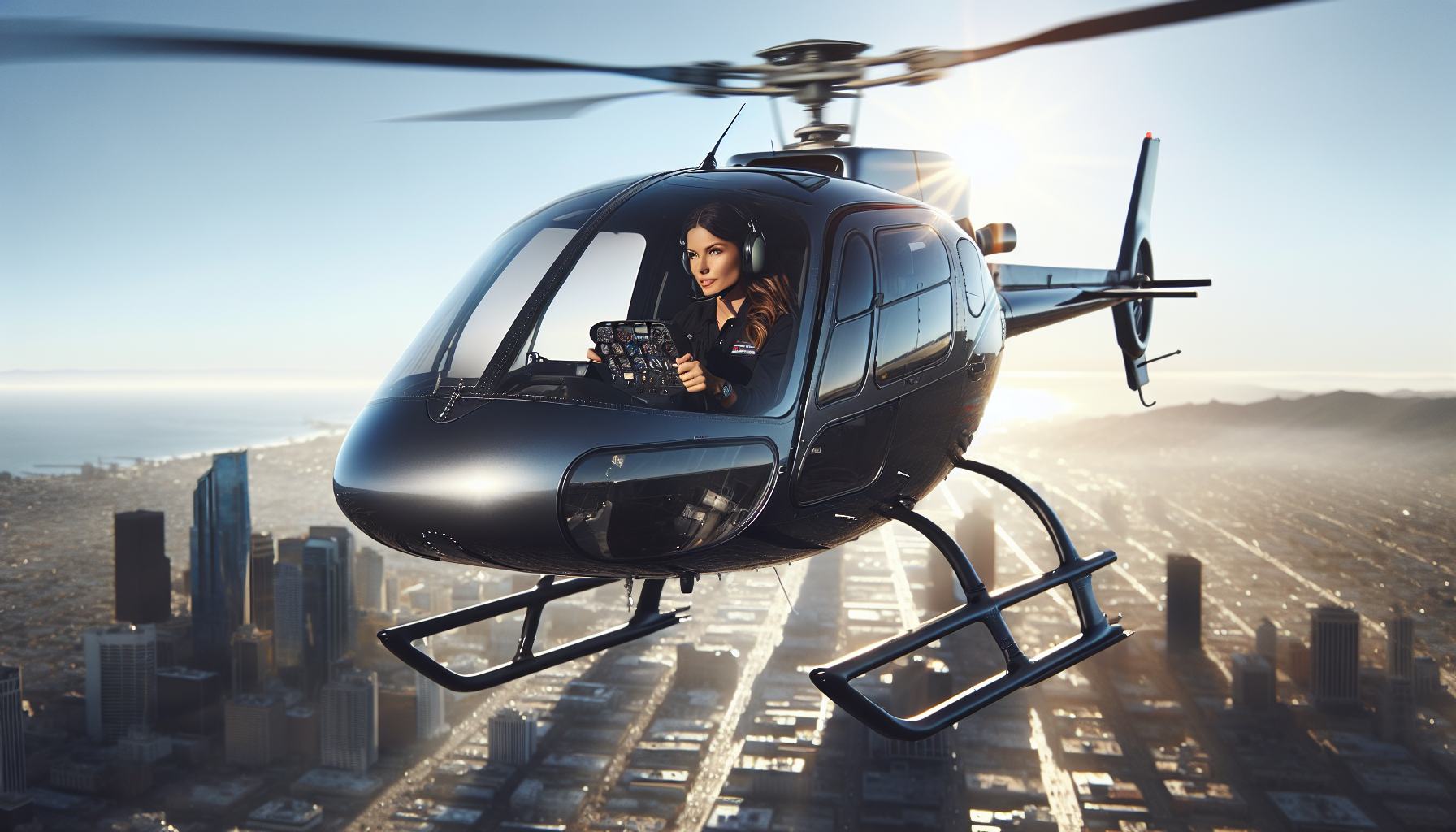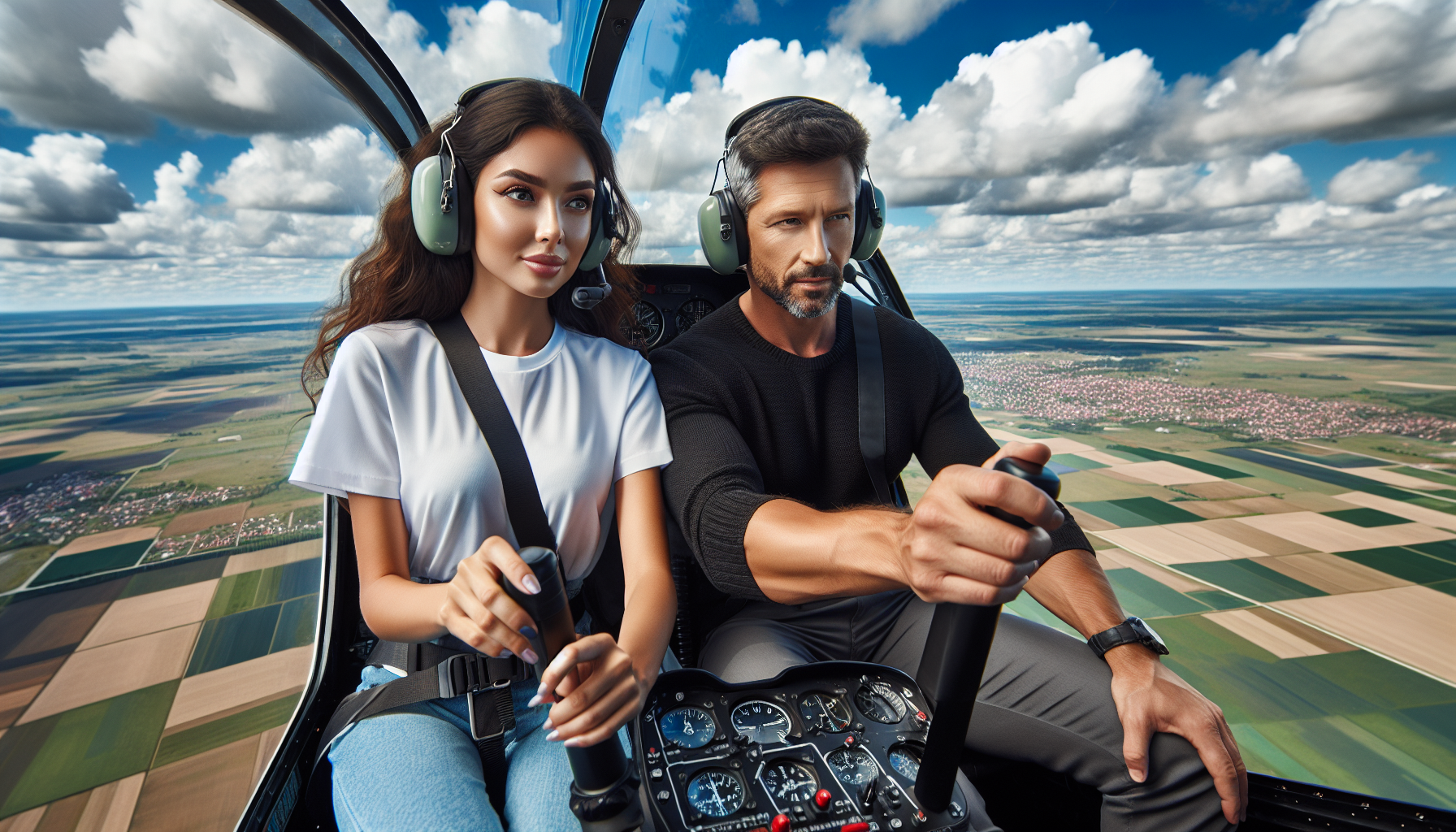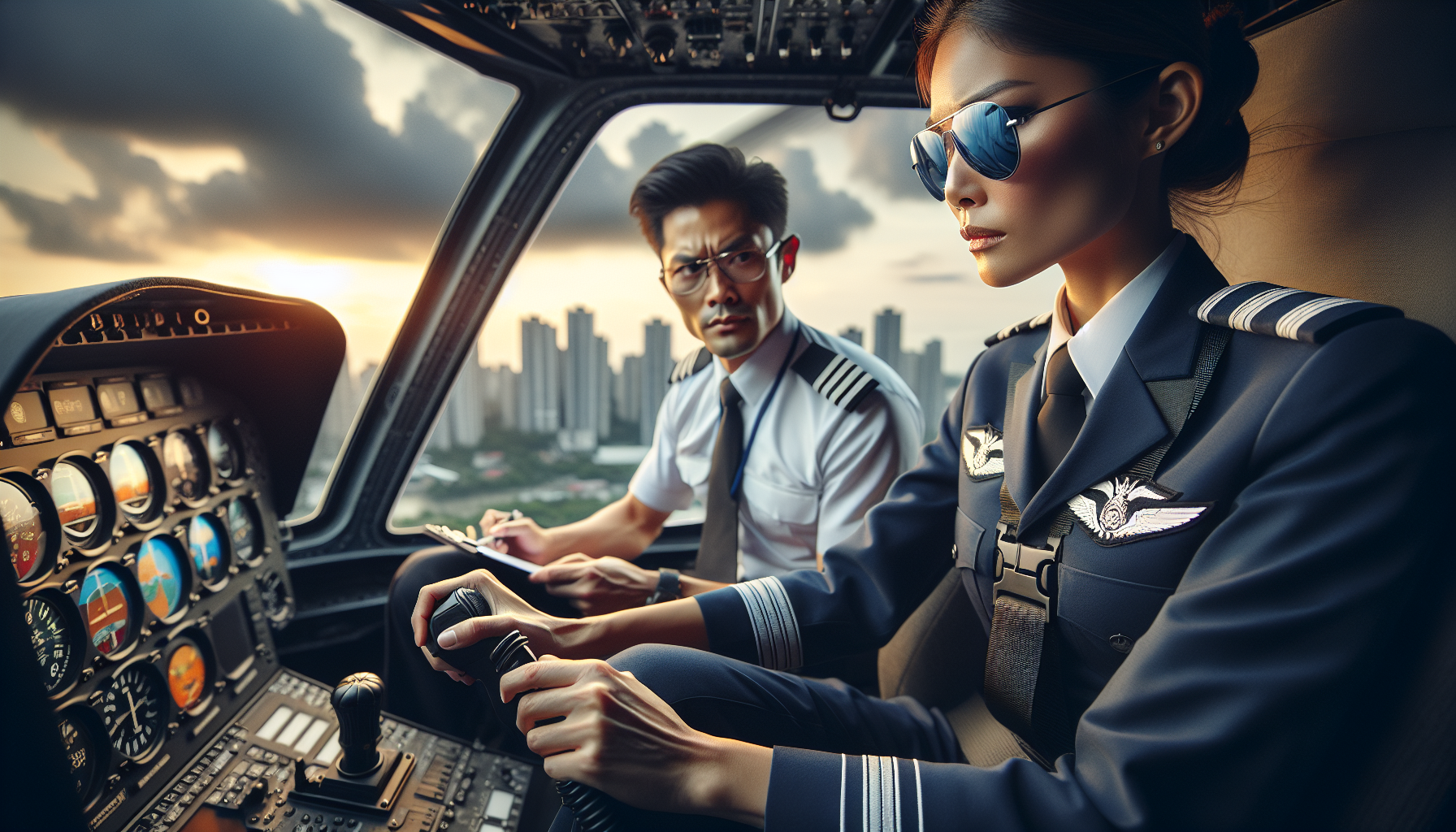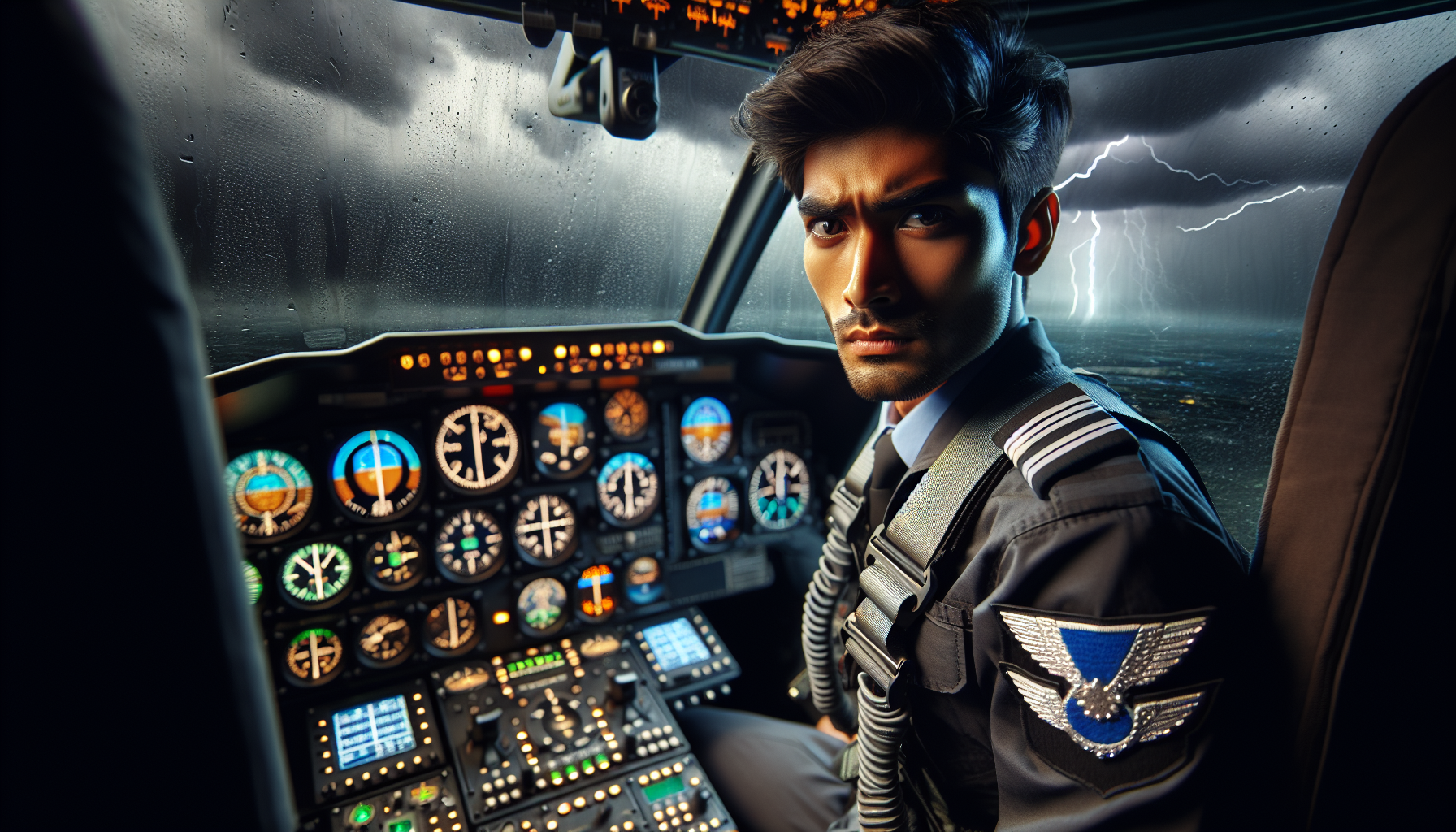Commercial Helicopter Pilot License: Requirements & Costs
Feb 16, 2024
Becoming a professional commercial helicopter pilot isn’t just about owning a cool job title. It’s about embracing a career that offers a unique perspective of the world, literally from the top! Imagine soaring through the skies, navigating through clouds, and embracing the thrill and challenge that comes with each flight. Such is the life of a commercial helicopter pilot. But how does one earn this prestigious title? What does the path to the skies look like?
In this guide, we’ll navigate you through the journey to earning your commercial helicopter pilot license. We’ll discuss the key differences and requirements, the necessary training, preparation for the FAA written test, mastering the check ride, and pursuing additional certifications. In essence, this is your roadmap to the skies!
Key Takeaways
-
Becoming a commercial helicopter pilot requires additional training, knowledge and proficiency than for a private license.
-
Age minimums of 18 years old and 150 flight hours are needed, as well as a Class II medical certificate to prove fitness.
-
Preparation involves finding the right school, logging specific categories of flight time such as solo flying & cross country experience, passing written tests & mastering check rides. Certifications can provide greater career opportunities.
Commercial Helicopter Pilot License: Key Differences and Requirements

Understanding the key differences between a commercial pilot certificate and a private pilot certificate is your initial step towards becoming a commercial helicopter pilot.
Unlike private helicopter pilots who fly primarily for personal or recreational purposes, commercial helicopter pilots are authorized to perform piloting services for hire. This allows them to fly a variety of missions, including:
-
Emergency services
-
Sightseeing tours
-
News gathering
-
Offshore oil rig transport
However, the wider scope of operations demands stricter requirements. A commercial helicopter pilot license has specific criteria, such as age, experience, and medical fitness, which differ from those needed for a private pilot helicopter certificate. Essentially, the journey to becoming a commercial helicopter pilot involves more than just accumulating flight time; it requires a higher level of training, knowledge, and proficiency.
Age and Experience Requirements
In aviation, age is not merely a number but a qualifying factor. To obtain a commercial helicopter pilot license, or a commercial certificate, as it is often referred to, one must be at least 18 years old. This age requirement ensures that pilots have the maturity to handle the responsibilities and challenges that come with commercial operations.
Besides age, experience also plays a pivotal role. As a prospective commercial pilot, you need to meet the following requirements:
-
Log a minimum of 150 flight hours
-
Ten hours of instrument training
-
20 hours of dual instruction in the required areas
Medical Certificate Necessities
Piloting a commercial helicopter isn’t just about maneuvering the aircraft in the sky. It also requires a sound body and mind. That’s where the medical certificate comes in. As a commercial helicopter pilot, you need to obtain a Class II medical certificate, which is required by the Federal Aviation Administration (FAA) to ensure that pilots meet the health standards necessary for commercial operations. In addition to the medical certificate, obtaining a helicopter private pilot certificate is essential for becoming a successful commercial helicopter pilot.
This medical certificate is not just a piece of paper. It signifies your medical fitness to handle the rigors of commercial flying. And it’s not a one-time affair either; you’ll need to renew your Class II medical certificate every 12 months to maintain your commercial privileges.
Education and Ground School
Obtaining a commercial helicopter pilot license is not just about skillful flying; it also necessitates a solid educational foundation. This is where ground school comes into the picture. Ground school provides an overview of essential topics, including aerodynamics, helicopter systems, and flight planning, to adequately prepare pilots for the FAA written test.
What’s more, this educational journey doesn’t end with ground school. The Commercial Pilot written examination is measured to a higher benchmark compared to the Private Pilot test. Both tests are based on the same material. You need to devote at least 20 hours to ground instruction in preparation for Commercial exams. Therefore, expect your ground school experience to be a rigorous but rewarding journey that equips you with the knowledge you need to ace the FAA written test and become a commercial helicopter pilot.
The Commercial Helicopter Flight Training Process

With a thorough comprehension of the requirements for a commercial helicopter pilot license, it’s time to start the commercial pilot training process, including the flight training and the commercial pilot flight test. Think of it as your practical classroom in the sky, where you apply the theoretical knowledge gained in ground school to real-world flying scenarios.
This phase of your journey involves finding a suitable flight school, logging the required flight hours, and gaining solo and cross-country experience. It’s a multifaceted process, with each step playing a crucial role in shaping you into a competent and confident commercial helicopter pilot.
Finding the Right Flight School
Your selected flight school significantly impacts your success in this journey. Think of it as the launchpad for your aviation career. Hence, such an important decision should be made thoughtfully. When selecting a helicopter flight school, cost is a paramount consideration. However, it’s not just about finding the cheapest option. The quality of instruction, the school’s reputation, and the resources available are equally important.
Location is another important factor. Not only should the flight school be conveniently located, but it will make the training process far more convenient if it is situated in an area with favorable weather conditions for flying. Furthermore, the quality and experience of instructors can significantly influence your learning experience. Therefore, take your time to research and visit potential flight schools, ask questions, and make an informed decision.
After all, the appropriate flight school can shape the path for your emerging career as a commercial helicopter pilot.
Flight Time Breakdown
Let’s talk numbers. To obtain a commercial helicopter pilot license, you need to log a minimum of 150 hours of flight time. But these aren’t just any flight hours. They are meticulously broken down into specific categories to ensure comprehensive training. These include a minimum of 20 hours of dual instruction, 10 hours of solo flying, and a cross-country flight.
These requirements are not just items to be ticked off on your credentials list; they are designed to build your confidence, enhance your skills, and prepare you for the diverse situations you might encounter as a commercial helicopter pilot. The solo flights, for instance, are designed to give you a taste of independence in the cockpit, helping you hone your decision-making skills and build confidence in your abilities.
Solo Flights and Cross-Country Experience
Solo flights and cross-country experience are like the final pieces of your training puzzle. Solo flights, as the name suggests, involve you controlling the helicopter without an instructor on board. This is your opportunity to put your skills to test and gain confidence in your abilities.
Likewise, cross-country flights – that is, flights that cover a significant distance from your training base – offer a unique learning experience. They expose you to different airspaces, weather conditions, and terrains, thereby enriching your flying experience and making you a well-rounded pilot. In essence, solo flights and cross-country experience are the final stepping stones towards your dream of becoming a commercial helicopter pilot.
Preparing for and Passing the FAA Written Test

With your practical flight training progressing, it’s time to focus on the FAA written test. This is where all the knowledge you’ve gained in ground school is put to the test. While the prospect of a written examination might seem daunting, with the right preparation, you can certainly ace it.
This section covers the various study materials and resources available to you along with some test-taking strategies. Together, these tools and tips will help you prepare effectively for the FAA written test, increasing your chances of success.
Study Materials and Resources
Let’s discuss the resources you need to prepare for the FAA written test. From textbooks and FAA publications such as the Helicopter Flying Handbook, to online courses and dedicated test-preparation platforms, there’s a wealth of resources at your disposal.
Each of these resources caters to different learning styles and preferences. Whether you prefer the traditional approach of studying from textbooks like The Pilot’s Handbook of Aeronautical Knowledge and The Airplane Flying Handbook, or you thrive on interactive learning offered by online courses such as Flight Nerd Air Force's Briefing Room Squadron, there’s something for everyone. Opt for a mix of resources to enhance your understanding and retention of the material.
Test-Taking Strategies
Equipped with the appropriate study materials, the subsequent step is to devise an effective test-taking strategy. The FAA written test for commercial helicopter pilots is composed of multiple-choice questions, so mastering the art of elimination and judicious guessing can be beneficial.
Another effective strategy is to focus on your weak areas. Use the feedback from your instructor and your performance on practice tests to identify areas that need improvement. Additionally, practice consistently and make use of resources like sample knowledge test questions available on the FAA website and test prep platforms like ASA's Prepware.
Remember, the key to acing the FAA written test lies in thorough preparation and smart strategizing.
Mastering the Check Ride: The Practical Flight Test

You’ve chosen the right flight school, logged the required flight hours, aced your FAA written test, and now it’s time for the final hurdle: the check ride. Also known as the FAA practical flight test, the check ride provides an opportunity to showcase your proficiency in executing the required maneuvers.
While it might seem intimidating, with proper preparation, you can master the check ride. In this section, we’ll discuss how to prepare for the check ride and share some tips to ensure a successful performance.
Pre-Check Ride Preparation
Appropriate preparation is a significant part of success, and this applies to the check ride as well. Preparing for the check ride involves several aspects, from reviewing the FAA’s practical test standards to becoming familiar with the helicopter’s systems, limitations, and emergency procedures.
Additionally, you should spend enough time practicing flight maneuvers. Remember, practice makes perfect. The more you practice, the more confident and proficient you’ll become.
Lastly, ensure all your required documentation is in order, including:
-
Commercial Pilot Certificate
-
Medical Certificate (Class I or Class II)
-
Pilot logbook
-
Government-issued photo ID
Tips for a Successful Check Ride
Now that you’re well-prepared for the check ride, let’s discuss some tips to ensure a successful performance. Firstly, stay calm and composed. Remember, the examiner knows you’re a student and doesn’t expect you to be perfect. Instead, they want to see that you can safely and competently pilot a helicopter.
Another important tip is to exhibit confidence. Respond to questions with assurance, remain composed and at ease, and demonstrate thoroughness in checks and communication skills. Remember, a check ride is not just about testing your flying skills; it’s also about assessing your decision-making skills and your ability to handle unexpected situations. So, be prepared, be confident, and you’ll ace your check ride!
Pursuing Additional Certifications and Ratings

With your commercial helicopter pilot license in hand, you might be keen to start your professional journey. However, consider enhancing your career prospects by pursuing additional certifications and ratings. These extra qualifications, such as an instrument rating and a Certified Flight Instructor (CFI) rating, can broaden your horizons, making you more employable and versatile as a commercial helicopter pilot.
This section discusses the advantages and requirements of obtaining an instrument rating and a CFI rating. These additional qualifications can be your stepping stones to more exciting opportunities in the world of commercial helicopter flying.
Instrument Rating
Broaden your career prospects with an instrument rating. This certification allows you to operate helicopters in low visibility and adverse weather conditions using only flight instruments for navigation and control. Such a qualification not only enhances your employability but also makes you a more versatile pilot, capable of handling various operational scenarios.
Obtaining an instrument rating requires meeting several criteria, including:
-
Possessing a private pilot certificate for helicopters
-
Being at least 17 years old
-
Demonstrating proficiency in the English language
-
Accumulating a minimum of 50 hours of cross-country flight time as pilot in command
-
Accumulating at least 40 hours of actual or simulated instrument time
It’s a challenge, no doubt, but the rewards are worth the effort!
Certified Flight Instructor (CFI) Rating
Imagine being able to share your passion for flying with others and shape the next generation of helicopter pilots. That’s precisely the opportunity a helicopter flight instructor rating offers. With this rating, you can teach others how to fly helicopters, providing an additional income source and gaining valuable experience.
Obtaining a CFI rating involves meeting several requirements, including:
-
Holding a valid commercial helicopter pilot license
-
Having a minimum of 200 hours of flight experience as a helicopter pilot
-
Passing the FAA written and practical exams for the CFI rating
-
Demonstrating proficiency in teaching and instructing helicopter flight operations
The process might be demanding, but the benefits are certainly rewarding!
Cost and Time Investment for Commercial Helicopter Pilot Training
Becoming a commercial helicopter pilot is an investment of both time and money. The cost and time commitment for commercial helicopter pilot training can vary significantly, depending on factors such as your existing number of flight hours, the type of helicopter you wish to fly, and your training’s scope.
This section provides an estimate of the costs associated with commercial helicopter pilot training and an expected timeline for completing your training. While the cost and time investment may appear substantial, consider it as an investment in your future as a commercial helicopter pilot.
Training Costs Breakdown
The cost of commercial helicopter pilot training typically ranges from $30,000 to $70,000. Though it might seem like a hefty sum, remember that it covers various aspects of your training. The cost includes flight instruction, which can amount to up to $20,000, and helicopter rental fees, which can range from $250 to $450 per hour, depending on the type and location of the helicopter.
In addition to flight instruction and rental fees, the total cost also covers ground school, which can cost between $5,000 and $10,000, and the equipment necessary for helicopter pilot training, which usually ranges from $5,000 to $12,000. Keep in mind that these are just estimates, and the actual cost can vary depending on various factors.
Timeframe Expectations
The time it takes to complete commercial helicopter pilot training can vary greatly, depending on factors such as the frequency of your training sessions and your progress rate. If you’re able to train full time, you could potentially complete your training within as little as 8 weeks. However, if you’re training part-time, flying for about 3-5 hours per week, it will likely take you around 6-8 months to complete your training.
Remember that these are just estimates, and the actual timeframe can vary depending on individual factors. For instance, your commitment, capacity for learning, and ability to meet the training requirements can affect the overall duration of your training program.
No matter the duration, bear in mind that becoming a commercial helicopter pilot is a long-term commitment, not a swift race. Patience, dedication, and consistent effort are the keys to achieving your goal.
Summary
Earning a commercial helicopter pilot license is an exciting journey, filled with new learnings and experiences. From understanding the unique requirements and undergoing intensive flight training, to acing the FAA written test and check ride, each step brings you closer to your dream of soaring the skies as a commercial helicopter pilot.
However, the journey doesn’t end with earning your license. With additional certifications such as an instrument rating and a CFI rating, you can enhance your career prospects and versatility as a pilot. Remember, becoming a commercial helicopter pilot is not just about flying; it’s about continuously learning, improving, and reaching new heights. So, are you ready to embark on this thrilling journey?
Frequently Asked Questions
How long does it take to become commercial helicopter pilot?
It usually takes 18 to 24 months to become a commercial helicopter pilot, as you must complete at least 150 flight hours of practical training.
Is commercial helicopter license worth it?
Becoming a helicopter pilot is worth it if you love flying and want to take advantage of the job opportunities it offers. Obtaining the required ratings involves a time and financial commitment, but the rewards can be huge for those who enjoy the adventure and diversity of aviation.
Can helicopter pilots become commercial pilots?
With the right experience, discipline, and commitment, you can easily transition from being a helicopter pilot to a commercial pilot.
Do helicopter pilots make good money?
Helicopter pilots typically make good money, with an average salary of $89,418 in the United States, and a range from $62,000 to $128,000 yearly. Depending on location, experience, and education, salaries can range from as low as $53,431 to as high as $196,878.
Are there any maximum age limits for commercial helicopter pilots?
Yes, there are maximum age limits for commercial helicopter pilots, particularly for those flying for airlines, which is typically set at 65 years. However, for non-airline commercial flying, such as charter or tour flights, there is no federally mandated retirement age as long as the pilot can maintain the required medical certification.
